.
San Francisco Bay bird rescue: Mystery goo bedevils experts: #sfchronicle page one: image via BirdRescue.org @IntBirdRescue, 20 January 2015


A mysterious substance is
coating the feathers of seabirds in the San Francisco Bay area and
leaving them vulnerable to cold temperatures: photo by Justin Sullivan via The Guardian, 23 January 2015

San Francisco Bay map showing eastern shoreline locations of the first affected birds to be found: image via International Bird Rescue, 17 January 2015

A male Surf Scoter (Melanitta perspicillata), one of hundreds of waterbirds found over the past week on East Bay beaches coated with a mysterious odorless substance, clear to pale gray in color, that like petroleum breaks down the bird’s feather structure, destroying its ability to regulate body temperature in the cold San Francisco Bay waters. The unidentified rubber cement-like goop mats the seabirds' feathers causing the animals to lose their insulation and become hyperthermic: photo by Cheryl Reynolds/International Bird Rescue, 17 January 2015

Surf Scoters contaminated by mystery substance in waters along eastern shoreline of San Francisco Bay: photo by Cheryl Reynolds/International Bird Rescue, 17 January 2015

Eared Grebes contaminated by mystery substance in waters along eastern shoreline of San Francisco Bay: photo by Cheryl Reynolds/International Bird Rescue, 17 January 2015
Removing @MysteryGoo from birds: Baking soda, vinegar & @DawnDish soap: image via BirdRescue.org @IntBirdRescue, 23 January 2015

Volunteers
wash a
male surf scoter at the International Bird Rescue in Fairfield,
California. The death of 100 birds in the San Francisco Bay Area has
baffled wildlife officials who say the feathers of the birds were coated
with a mysterious substance that looks and feels like rubber cement: photo by Marcio Jose Sanchez/APvia The Guardian, 23 January 2015
San Francisco Bay birds succumbing to mysterious 'grayish goo': Substance saps birds’ ability to insulate against cold – about 100 have died: Associated Press in San Francisco via The Guardian, 20 January 2015
A
mysterious sticky substance has been found coating the feathers of
about 300 seabirds in the San Francisco Bay area in the past few days,
and wildlife officials blame it for dozens of deaths.
California department of fish and wildlife authorities were expected to conduct necropsies and laboratory tests on Tuesday to try to uncover the source of the grayish gunk, the San Francisco Chronicle reported. About 100 birds have died so far.
Officials believe the substance was dumped into San Francisco Bay. It is not a public health or safety risk to humans.
Fish and wildlife spokesman Andrew Hughan said analysts already know it is not a petroleum-based substance, and said it killed the birds by sapping their ability to insulate themselves against the cold. They froze to death.
The interim executive director of International Bird Rescue, Barbara Callahan compared the goo to rubber cement.
“It’s kind of gray. It’s hard to get off in the wash,” she said. “It is sticky, but it doesn’t want to come off the feathers.”
The coated birds were concentrated in suburban areas east of San
Francisco, including the cities of Alameda, San Leandro and Hayward.
Callahan said the goo was probably a man-made product, meaning a
pipeline burst or something was intentionally used to foul the East Bay.
She said workers at International Bird Rescue have had to pretreat birds with baking soda and vinegar to loosen the substance before washing it off with dish soap. The usual treatment for washing pollutants such as oil, roofing tar, cooking oil from fast-food restaurants and glue traps did not work.
“I’ve worked 20 years in this business, handling oil spills all over the world, and I’ve never seen a product like this impact animals in our clinic,” Callahan said.
The treatment cost is upward of $8,000 a day to pick up and treat the birds.
“We are doing everything we can as an organisation,” she said. “I hope our supporters recognize that we need some help.”
@AudobonCA: Appreciate all your volunteers helping us make "Every Bird Matters" #MysteryGoo response: image via BirdRescue.org @IntBirdRescue, 22 January 2015
New seabird update: 242 in care, 55 washed, 187 awaiting wash: SF Bay mystery goo: image via BirdRescue.org @IntBirdRescue, 19 January 2015

A rescued Bufflehead sea duck that is coated in an unknown substance is seen at International Bird Rescue's San Francisco Bay Center in Fairfield. Hundreds of birds coated in the same substance were found at different places along the East Bay shoreline, starting on Friday, January 16, 2015 and transferred to International Bird Rescue for further care: photo by Cheryl Reynolds via International Bird Rescue, 21 January 2015
#MysteryGoo seabird numbers: San Francisco Bay Center:
322=Admitted
263=Live in care
163=Washed: image via BirdRescue.org @IntBirdRescue, 22 January 2015
RT @IntBirdRescueState lab: (PIB) not culprit #MysteryGoo killing seabirds SF Bay: image via Julia Freeman @JuliaMacauley, 21 January 2015
Good work! #Mystery Goo Seabird Rescue from @IntBirdRescue: image via Monterey Bay Aquarium @MontereyAq, 21 January 2015
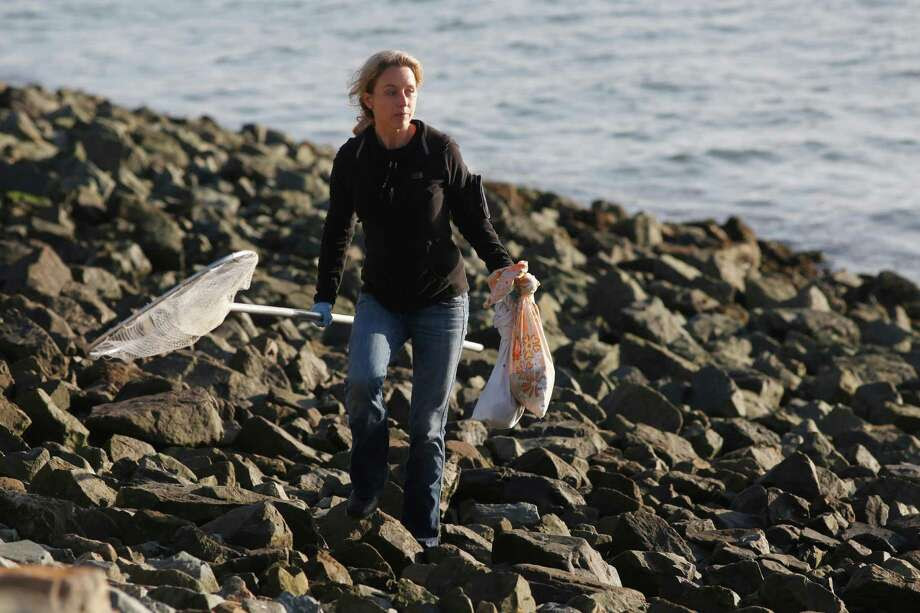
Amber Transou with International Bird Rescue holds two live surf scoters in Alameda that got coated with the gooey substance: photo by Mike Kepka/San Francisco Chronicle, 19 January 2015

Mark Russell with International Bird Rescue secures a live surf scoter affected by mysterious substance on Monday
in Alameda: photo by Mike Kepka/San Francisco Chronicle, 19 January 2015
Surf scoters comprise about 70% of the birds that were collected #MysteryGoo San Francisco response: image via BirdRescue.org @IntBirdRescue, 23 January 2015

Surf Scoter (Melanitta perspicillata), young male: photo by John Gresham, 29 February 2008

Surf Scoter (Melanitta perspicillata), male: photo by USFWS Southwest Region, 21 February 2009

Surf Scoters (Melanitta perspicillata), male (left) and female (right): photo by Omar Runólfsson, 24 April 2011

Surf Scoters (Melanitta perspicillata), male (left) and female (right): photo by Omar Runólfsson, 24 April 2011

Surf Scoters (Melanitta perspicillata), female (left) and male (right): photo by Omar Runólfsson, 24 April 2011

Surf Scoter (Melanitta perspicillata), male: photo by Omar Runólfsson, 24 April 2011

Surf Scoter (Melanitta perspicillata), male, Arrowhead Marsh, Oakland, California: photo by Len Blumin, 7 November 2006
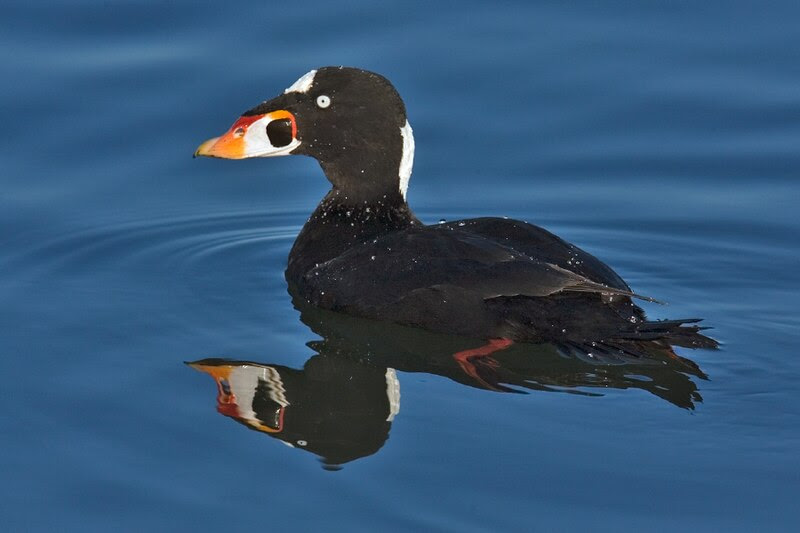
Surf Scoter (Melanitta perspicillata), male, Bolsa Chica Ecological Reserve, Huntington Beach, California: photo by Alan D. Wilson, December 2007

Surf Scoter (Melanitta perspicillata), Los Osos, Morro Bay, California: photo by Mike Baird, 28 March2007

Surf Scoter (Melanitta perspicillata), male, Monterey Bay, California: photo by Ben Lascelles, 17 January 2009 (via Internet Bird Collection)

Surf Scoters (Melanitta perspicillata), male and female swimming together, Coronado Cays, California: photo by Peter Vercruisse, 13 February 2004 (via Internet Bird Collection)

Surf Scoters (Melanitta perspicillata), group swimming near the dock, Boundary Bay, British Columbia: photo by Ken Havard, 7 April 2014 (via Internet Bird Collection)
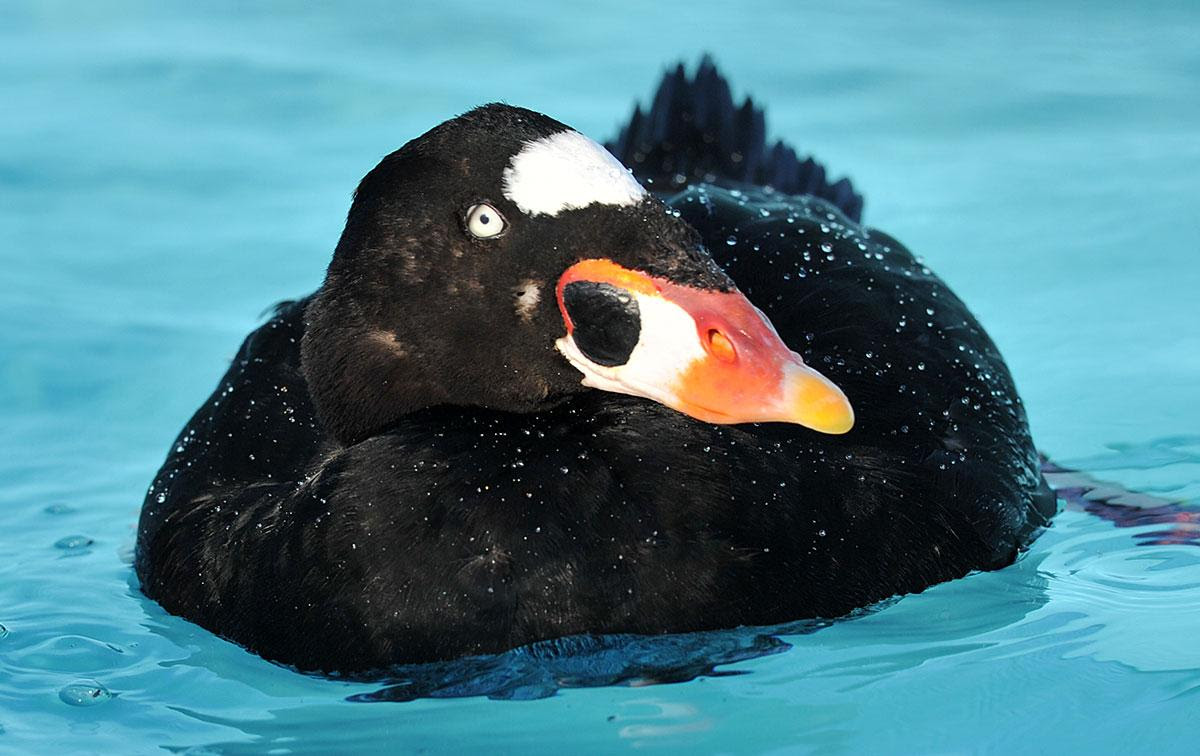
Majority SF Bay #MysteryGoo seabirds: Surf Scoters with 200+ brought to our center: image via BirdRescue.org @IntBirdRescue, 23 January 2015
Shot...... #seaduck hunting: image via jeff coats @pitbossH2Ofowl, 24 March 2014
#seaduck hunting thank you Jimmy for the picture: image via jeff coats @pitbossH2Ofowl, 22 January 2014 Ocean Pines, MD
#seaduck hunting: image via jeff coats @pitbossH2Ofowl, 21 November 2014 Ocean Pines, Maryland
#surfscoter: image via jeff coats @pitbossH2Ofowl, 24 October 2014
@pitbossH2Ofowl: Salt Ice #seaduck hunting: image via Cam Pauli @CamPauli, 24 January 2014
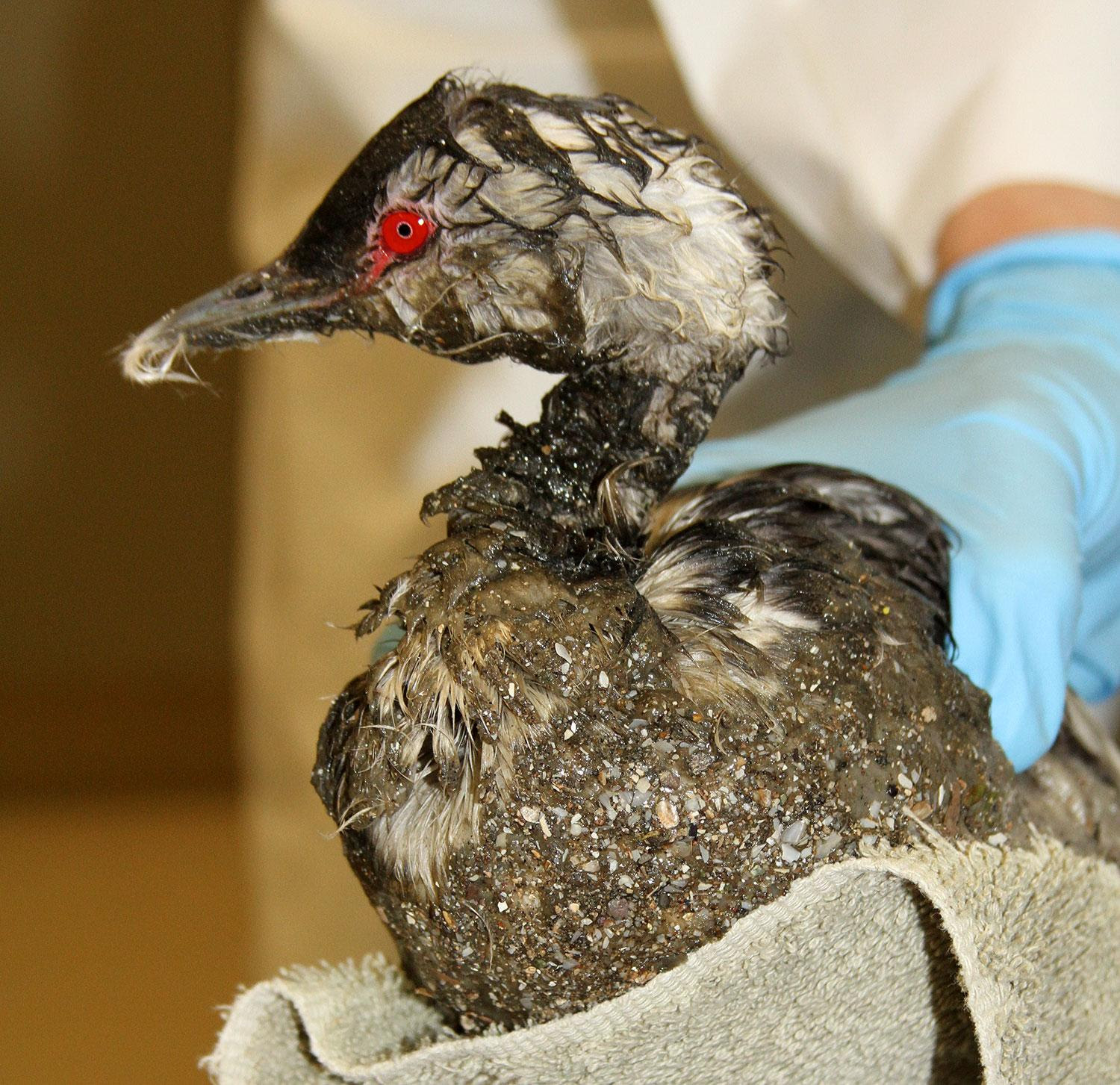
State lab: polyisobutylene (PIB) not culprit: #MysteryGoo: image via BirdRescue.org @IntBirdRescue, 21 January 2015

A bird is cleaned at the International Bird Rescue in Fairfield, California. California officials are unable to identify a grey, goo-like substance that has been found coating the feathers of hundreds of birds. More than 200 seabirds have been found dead along the coast, while more than 300 have been rescued so far: photo by Robert Galbraith/Reuters. 20 January 2015 (Reuters/Robert Galbraith)

Goo Seabird #s: Total 360 collected, 280 live brought to ctr, 38 died after transport. In care 242: image via BirdRescue.org @IntBirdRescue, 20 January 2015
Washing Seabirds of SF Bay #MysteryGoo: Clean birds looking great: Surf Scoter: image via BirdRescue.org @IntBirdRescue, 21 January 2015

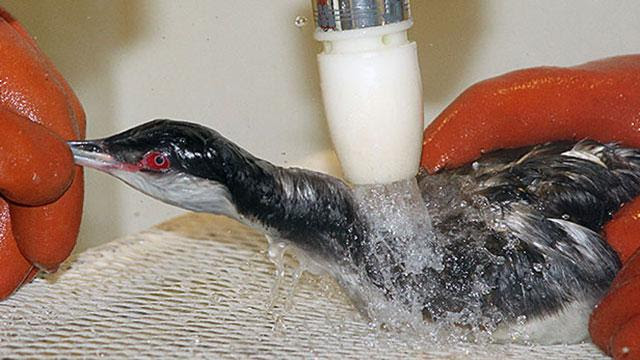










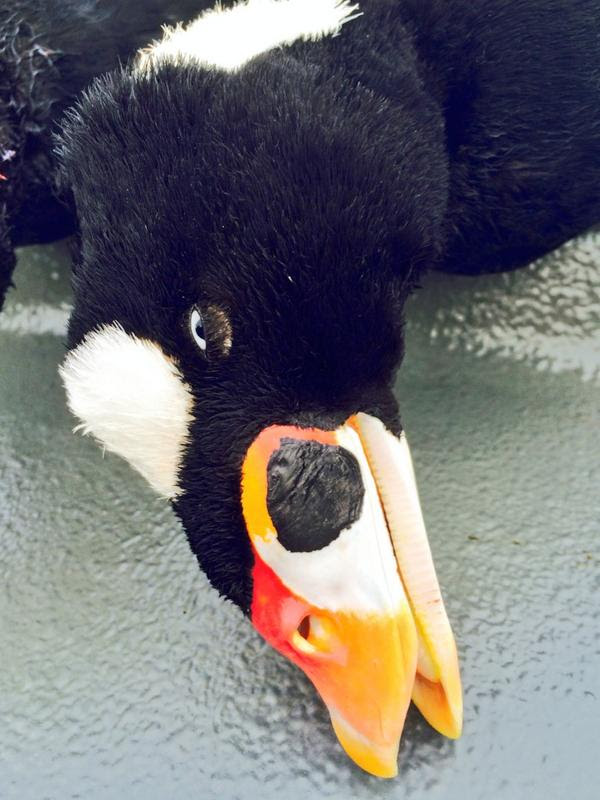

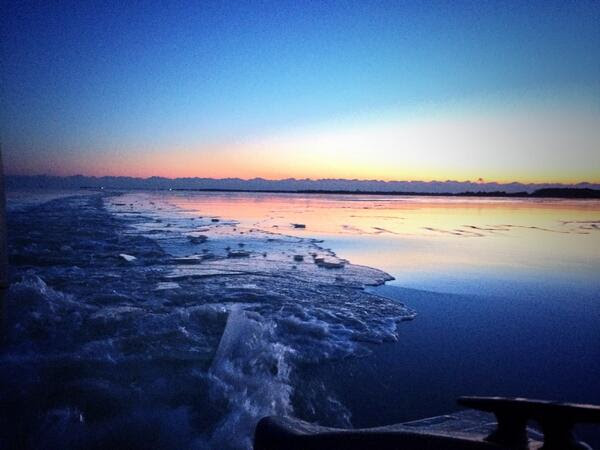
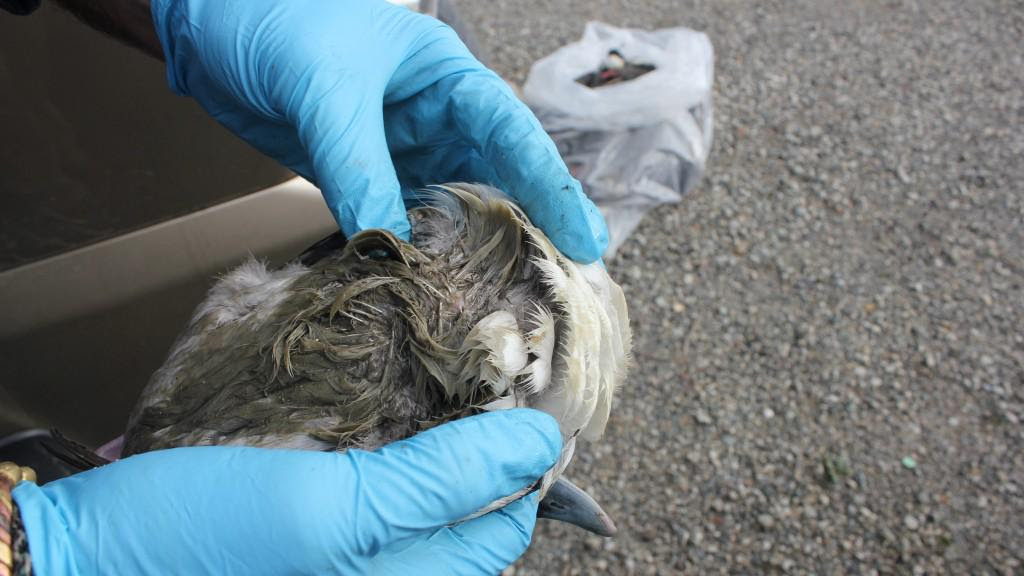








7 comments:
Marvin Gaye: Mercy, Mercy Me / What's Goin' On (live at Montreux Jazz Festival, 1980)
Marvin Gaye: What's Goin' On / What's Happening, Brother? (live)
CROWING OVER GOO
What a close call,
You fine feathered dodos—
What a relief to hear
This goo is not a public health
Or safety risk to humans—
Save for the likes of you.
I just left a comment on your previous post saying I hadn't seen anything like this in the north bay, but now that I think of it, I did see a dead bird wash ashore this morning. Might be unrelated, but still -- I hope they find the culprit.
For the gift of life with all its wonders all living things are in debt not to God nor to alien spores but to Earth, which provided. The beautiful waterbirds of the Bay are an ungodly gift; in winter they forage the East Bay coastal flats, along a freeway corridor of Late Industrial wasteland few creatures would find appealing. But they have been wintering here a long time, living by foraging for bugs and grubs and the like. Evolution has equipped them for the task. Now they start turning up dead, freezing and starving, covered with a strange mystery slime that's very hard to remove. Most of the affected birds on the shoreline have already died, the tiny rescue center has more or less collapsed under the weight of the disaster, no one's risking going out on the rocks to look for more damaged birds, whatever or whoever has been pumping death into the Bay may well still be doing it. There are a half dozen big poison-spewing refineries just up the road, there is large scale shipping in and out of the Port of Oakland, and there are wildcat operators who will dump or pump anything anywhere at any time, if they can get away with it. Meanwhile there is the logical supposition that plant life in the Bay is inevitably also being damaged. And then there is all the rest of the aquatic life, none of it likely to derive much benefit from being choked by viscous chemical gunk.
To say that no humans are being harmed by a significant threat to a major marine habitat and avian flyway along with the attrition of the surrounding ecosystem is to say that unless persons or personal property are immediately and materially affected, all's well and Have a Nice Day. Not that the madly speeding and lane-jockeying freeway motorists were going to be spending much time contemplating all that unwonted majesty, in any case.
So. Just the facts, Ma'm, as Joe Friday used to say. Nobody has yet figured out (or nobody is yet saying) who's created this disaster.
This is where things stood by the end of Thursday, when the rescue efforts stopped:
____
Scientists race to identify goop on birds along San Francisco Bay shorelines: Two hundred birds have died, and 315 more have been coated with a gray, sticky, and odorless substance: The affected birds began turning up on San Francisco Bay shorelines about a week ago: Daniel Wood, Christian Science Monitor, 22 January 2015
Los Angeles — Three days after rescue efforts escalated to find and save goop-covered seabirds along the shorelines of San Francisco Bay, the operation has been halted – with many key questions still unanswered. Two hundred birds have died, and 315 more have been coated with a gray, sticky, and odorless substance.
Researchers don’t know what the substance is or where it has come from. They are busily – some say frantically – trying to find out by applying chemical tests and autopsy procedures. The hope is to alleviate the suffering and free the wings of the still-living birds so they can be released back into the wild.
“Identifying the substance will help us in at least two big ways,” says Andrew Hughan, spokesman for the California Department of Fish and Wildlife. “It will tell us what we can do to help the 315 birds still living, and then we might also be able to determine its source, which could help in prosecuting whoever the culprits are.”
As scientists have tried to identify the substance, they’ve ruled out polyisobutylene, an odorless and mostly colorless material that killed thousands of seabirds in Britain in 2013.
The affected birds – mostly horned grebes, surf scoters, and buffleheads – began turning up on shorelines on Jan. 16 in Hayward, San Leandro, Alameda, and Foster City, Calif. Volunteers and professional rescue workers began scouring the shorelines on Monday.
The area where the birds have been turning up is formally designated an important bird area (IBA), notes Jordan Wellwood, director of the Richardson Bay Audubon Center & Sanctuary in Tiburon, Calif. In the United States, the IBA program is implemented by Audubon and local partners.
Mr. Hughan explains why the search was called off late Thursday afternoon.
“We aren’t going to find any more live birds, so we’re not going to risk worker safety anymore in the mud and cold of San Francisco Bay,” he said.
Hughan gives credit for the operation to International Bird Rescue, an aquatic bird rescue center that has a facility in Fairfield, Calif.
“They have been the ones with their boots in the mud, they are the heroes. The birds would not have been saved if not for their people, equipment, and commitment,” he says. "The state is very appreciative."
Barbara Callahan, interim executive director of International Bird Rescue, explains what could happen in the coming days and beyond.
“The next story is what is the product and where did it come from and who did this,” she says. “Once that is known, I would hope there are regulations in place to make the responsible party pay for this response because as it is, International Bird Rescue is bearing the cost of the wildlife rescue in its entirety.” The cost is about $11,000 a day, she says.
Scientists are concerned about what other wildlife may be at risk from the substance, Ms. Wellwood says.
“The fact that it is still a mystery what this substance is is very concerning,” she says. “Time is of the essence.”
This does have implications for us. We're part of the same ecosystem. The harm we do will come back to bite us on the arse in time.
The "mystery" persists, though with each successive indication of bewilderment on the part of the appropriate officials and agencies, concurring emphatically that it is simply impossible to sort the chemicals involved, the rational suspicion cannot help but arise, that there may be some responsibility on the part of one or another of the massive corporations engaged in things such as the fabrication and transportation of industrial chemicals in, on, and around the Bay.
Post a Comment